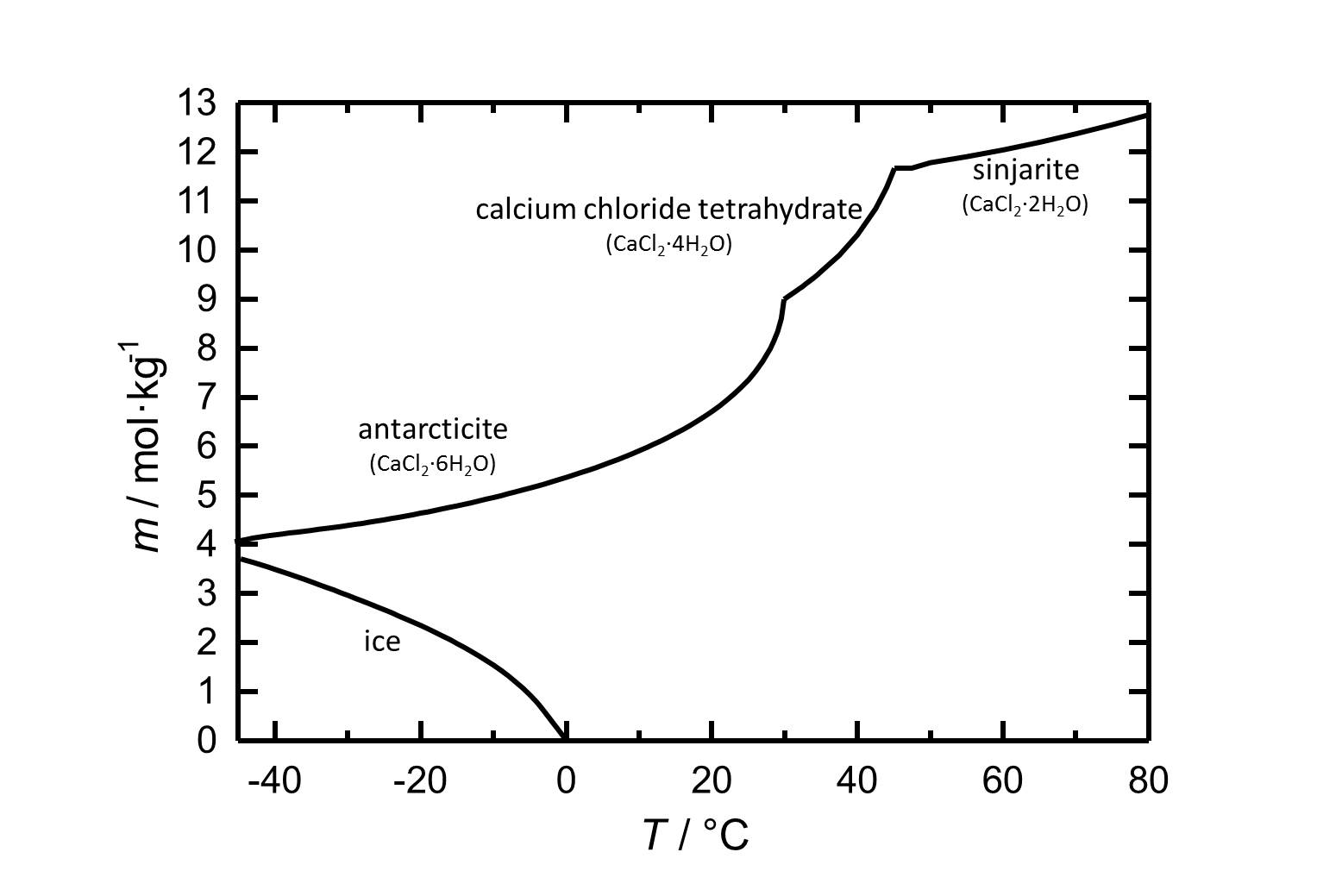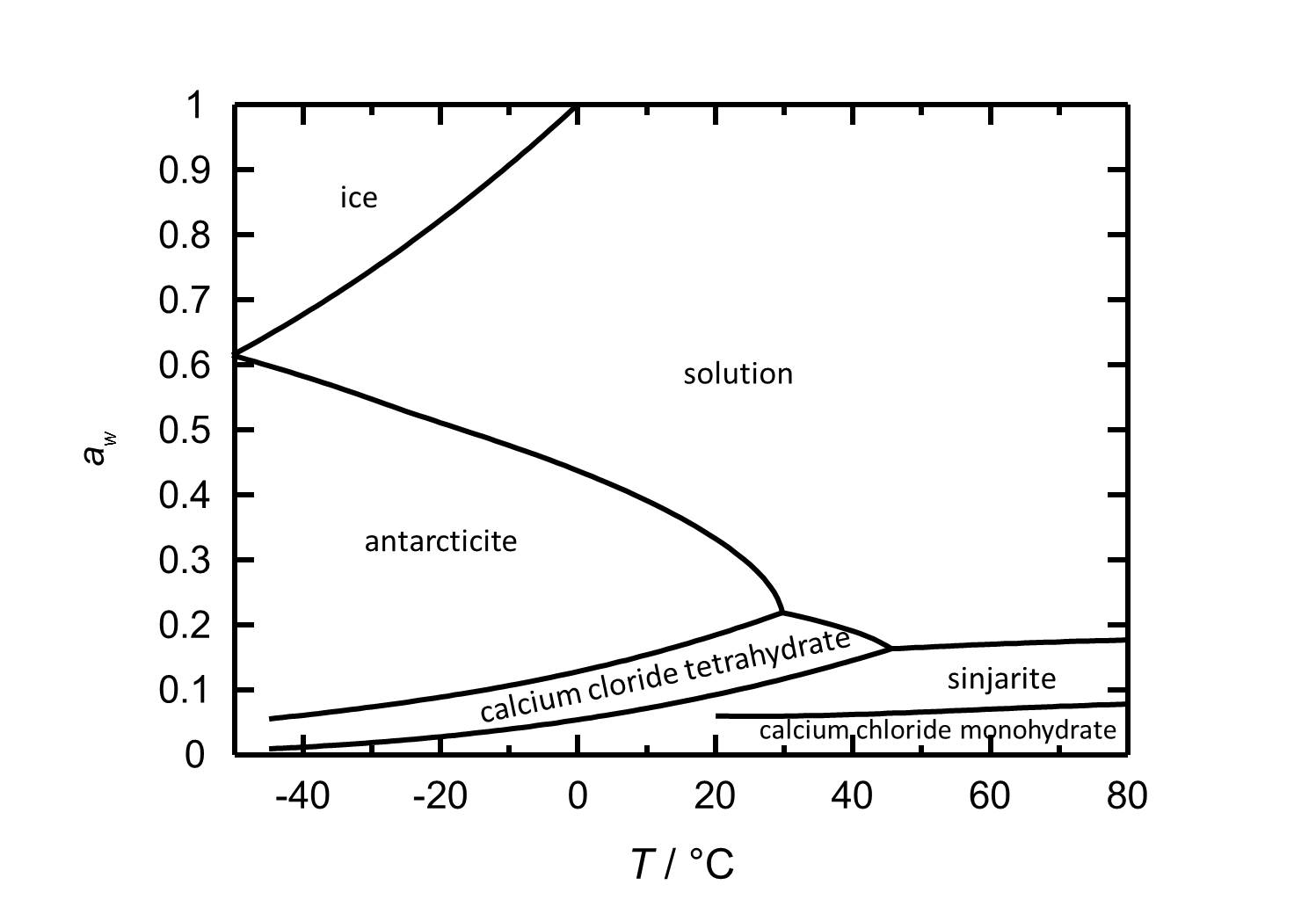Calcium chloride
Author: Amelie Stahlbuhk
back to Chloride
Abstract[edit]
The different hydrate stages of calcium chloride are presented, as well as their behavior regarding solubility and hygroscopicity.
Hydrate stages[edit]
Calcium chloride monohydrate: CaCl2•H2
Sinjarite: CaCl2•2H2O
Calcium chloride tetrahydrate: CaCl2•4H2O
Antarcticite: CaCl2•6H2O
Solubility[edit]
Under standard conditions the hexahydrate of calcium chloride Antarcticite is the stable form. The salt has got a high solubility in water which increases with increasing temperatures. The dehydration steps to the calcium chloride tetrahydrate and to sinjarite take place at temperatures of 30 °C and 45 °C, respectively.
Hygroscopicity[edit]
In the system CaCl2-H2O hydration/dehydration and crystallization/deliquescence processes can occur by changing relative humidity or temperature. At room temperature the present phase Antarcticite has got a deliquescence humidity of about 30 %. The deliquescence behavior depends on the temperature as the deliquescence humidity decreases with increasing temperature. Changing the relative humidity at 20 °C, calcium chloride tetrahydrate forms at values below 18 % RH. The dehydration to the Dihydrate (sinjarite) and the monohydrate occurs at 9 % RH and 6 % RH, respectively.
| Phase transition | Deliquescence or equilibrium humidity at 20°C |
| Antarcticite-solution | 33.3 % |
| Antarcticite-Calcium chloride tetrahydrate | 18.5 % |
| Calcium chloride tetrahydrate-Sinjarite | 9 % |
| Sinjarite-Calcium chloride monohydrate | 6 % |

